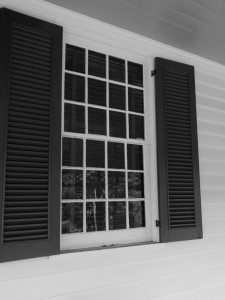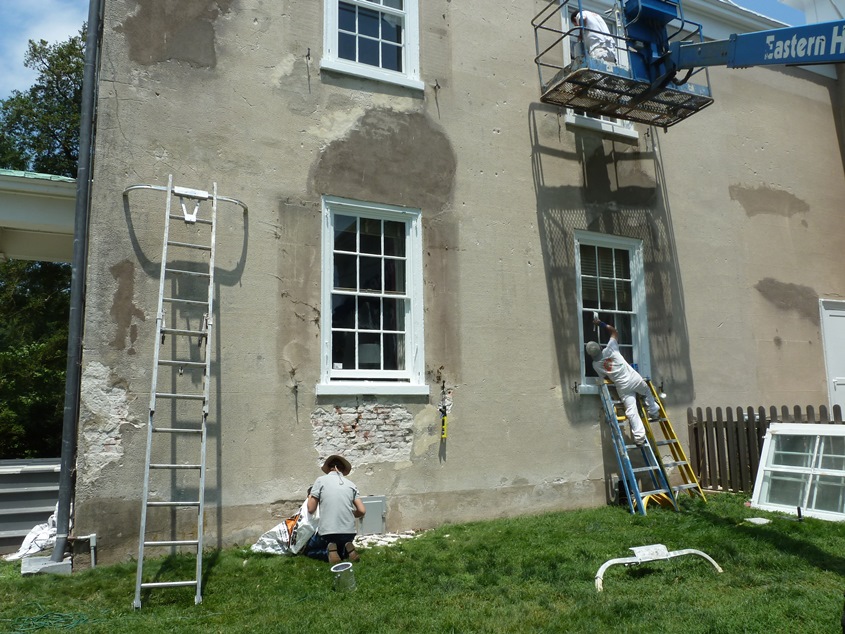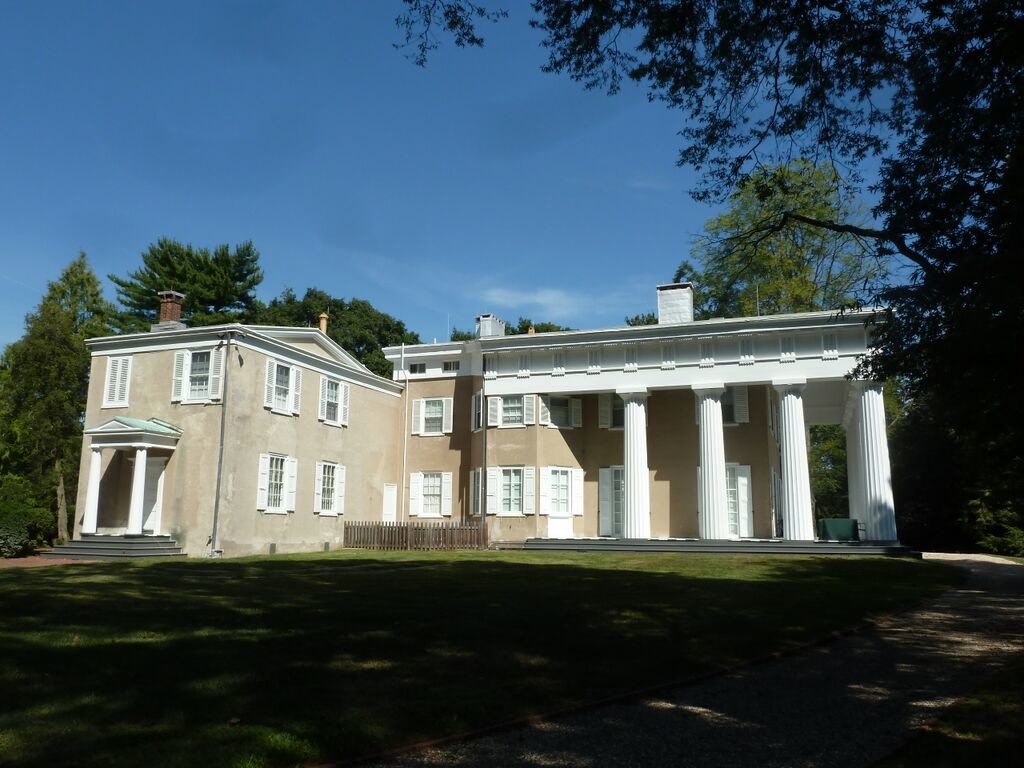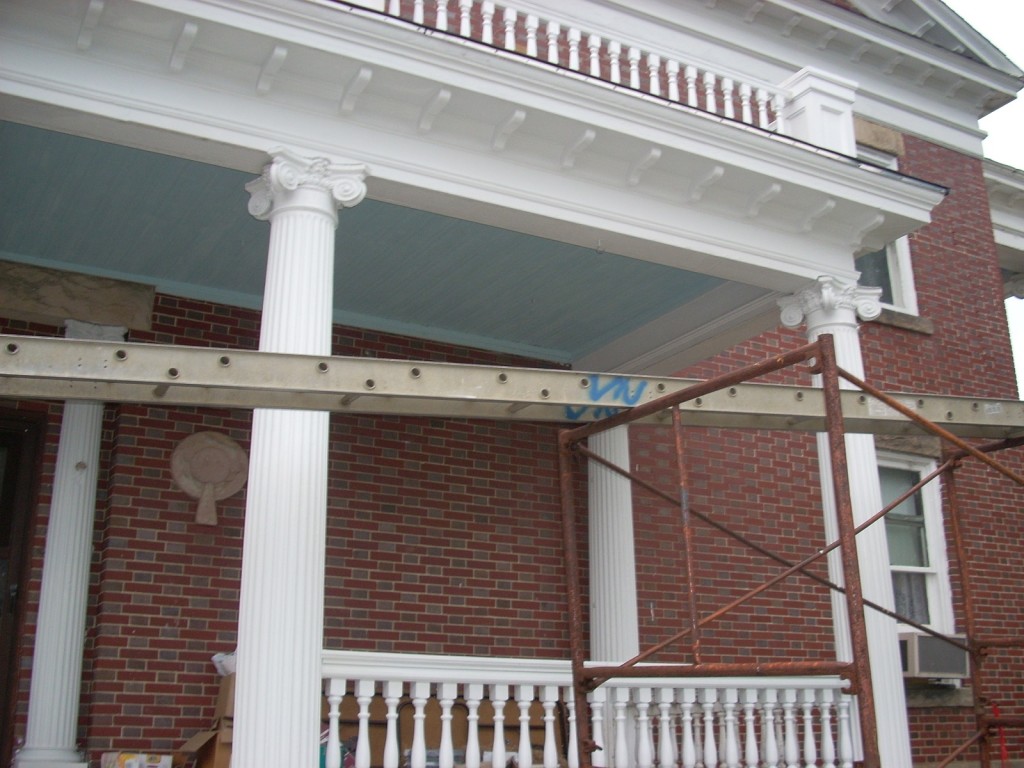Things To Do Now is an occasional series featuring tips and tricks for some of the SHPO’s most popular programs and projects.

The windows at the Neville House in Allegheny County were restored with the help of a Keystone Construction Grant.
It is that time of year to start thinking about applications to the PHMC’s Keystone Historic Preservation Grant program, which supports planning and construction projects for historic places throughout the Commonwealth. Unfortunately, PHMC is unable to release application materials right now due to the state budget impasse. However, in anticipation of a forthcoming grant round, I encourage nonprofit organizations and municipal governments to start thinking about their applications. Many of the facets of a competitive application are good stewardship practices for caring for your historic building or community and are a worthwhile investment of time now despite this delay.
1. Contact the Bureau for Historic Preservation to discuss your project
We recommend discussing the nuances of your project with staff members of the Bureau for Historic Preservation prior to making an application. Both grant staff and the Community Preservation Coordinators are able to discuss the program guidelines and requirements of the Keystone Program. The staff can discuss the funding priorities of the Bureau and how your project may be able to enhance Bureau initiatives outlined in the current Statewide Preservation Plan.
Also, one of the requirements of the Keystone grant program is that the project enhances a property that is eligible for or listed in the National Register of Historic Places. Please don’t assume that because the property is a locally recognized historic site that it has been documented for the purpose of the National Register Program. Our National Register Coordinators can confirm the status of the resource and provide the BHP’s unique six digit key number, needed for the application. If the property does not have a number, there is plenty of time to prepare the documentation and request a determination of eligibility. Remember, it is Bureau for Historic Preservation policy to re-evaluate properties if a determination was made more than 5 years ago. Staff may request current photographs to confirm that the condition has not changed since its last evaluation; however, sometimes a more thorough context or history must be developed if documentation does not meet current standards.
2. Discuss your project with a preservation professional/get estimates
Is your project sensitive to the historic building? Is it the recommended treatment? Your historic building is the most important part of your collection and as such, it deserves to be evaluated and carefully studied. Does your project address the most immediate preservation need or are there other projects that must be addressed first? Many projects that receive construction grants have completed the crucial preservation planning long before applying for a Keystone grant. A thorough assessment of the site will frame not only the project’s scope but also long-term preservation goals for the property or community.
It is also a great time to assemble your project team. Do you have the right professionals and volunteers to ensure your project will be a success? Do you need a design professional to prepare drawings, provide professional oversight or manage construction? PHMC allows you to preselect your team and it is helpful to discuss the attributes and experience the team will bring to the project. However, if you are required to complete a competitive bid process and your project team will not be selected until after the application phase, feel free to discuss in the application what type of experience will be needed.
Remember, projects that are well planned and include realistic budget numbers are generally better received by the grant review panel than those applications that are not fully formed. Applicants are welcome to attach estimates to demonstrate that they have fully planned their project. Make sure your contractor is aware that Keystone program is state funding and construction projects require consideration under the Pennsylvania Prevailing Wage Act.
3. Secure your match!
Both Keystone Historic Preservation Project and Construction grants require a 50/50 CASH match. Although applicants do not need to have their match secured at the application phase, the grant review panel does factor cash in hand or the fundraising plan in their recommendations for funding.
4. Photographs
Although PHMC is familiar with many historic resources throughout the Commonwealth, our resource and National Register files may not contain current photographs. Photographs are the best way to describe the condition of the property. Please include an overall view of main elevation and setting, but don’t forget detailed views that really substantiate your case. For instance, if the application is focused on window repair, what does the window look like? Does it need the level of intervention proposed? If you asking for assistance planning for ADA improvements, photographs of the proposed ramp location would be imperative to understand the complexities of your project.
5. Letters of support
PHMC’s Grant Review Panel reviews support letters to gauge the community impact of the organization or resource. Start thinking now of who can best articulate that. Do school groups rely on your programming to fill in a gap in their curriculum? Does the church serve as a food pantry that makes it an integral component in the health of the community? PHMC encourages you to reach out to your elected officials so they know the good work that happens in their district. Their letters of support are important but local letters demonstrate that there are more than just a few people impacted if this resource is preserved. Look for impartial members of the community who do not receive a direct personal benefit to lend their support to your project. Remember that meaningful letters take some time to compose. Request a support letter now to allow your friend adequate time to discuss the merits of your project, importance of it to the community and provide tangible examples of how the program reaches the community. Please do not assume that the Grant Review Panel will understand the importance or the hole in interpretive programming should the building deteriorate or the planning project not be completed.
Remember, specific details concerning the Keystone Grant Program’s next application round will not be released until the Commonwealth budget is passed for fiscal year 2015-2016. The program is reliant on the availability of funding. Please feel free to check out our website regularly or subscribe to our newsletter for updates.
Comment Policy
PHMC welcomes and encourages topic-related comments on this blog. PHMC reserves the right to remove comments that in PHMC’s discretion do not follow participation guidelines.
Commenters and Comments shall be related to the blog post topic and respectful of others who use this site.
Commenters and Comments shall not: use language that is offensive, inflammatory or provocative (this includes, but is not limited to, using profanity, obscene, or vulgar comments); disparage other commenters or people; condone illegal activity; identify the location of known or suspected archeological sites; post personal information in comments such as addresses, phone numbers, e-mail addresses or other contact details, which may relate to you or other individuals; impersonate or falsely claim to represent a person or an organization; make any commercial endorsement or promotion of any product, service or publication.
If you would like to comment on other topics not related to this blog post but related to PHMC, please fill out the PHMC Contact Us Form.




Are there any grants for private citizens to maintain historic residences. We are purchasing a 1892 house in Pottstown. Just trying to assess any assistance that may be available. The house has a slate roof that needs repairs and substantial masonry repairs as a first step in maintaining the structure. There are also many leaded stained glass windows that need work as the glass is bending in the frames.
Thank you for any insight you can provide.
Thank you so much for your inquiry. Unfortunately, grant programs through the Commission for historic properties are limited to non-profit organizations and municipal governments. You may wish to inquire at the Borough office if they have a program that may benefit you. Good luck!